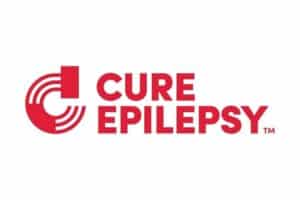Epilepsy is an ancient disorder that continues to lurk almost everywhere in today’s world. Millions, for example, are impacted by it globally and in the U.S. Unfortunately, the disorder’s history hasn’t worked in its favor in terms of research, treatments and cures, especially when compared to other neurological disorders. Why? There are all sorts of reasons, including the stigma that continues to be attached to epilepsy. Fortunately, Steve Austin of CURE Epilepsy spoke to WellWell recently about why epilepsy sufferers get the short straw, what’s being done to change things and what it’s like to live life under the shroud of the disorder. Read on.
How many people in the world suffer from epilepsy?
It’s about 70 million worldwide I believe and over 3 million Americans, so one in 26 people suffer from epilepsy.
Why don’t we know more about this? Why isn’t there more public awareness?
Many neuroscience conditions are not as well understood as other types of conditions because more research needs to be done. And there happens to be a bit of a stigma around epilepsy that other conditions don’t have. So, there is less awareness. I think people are also generally afraid to talk about it and they are, as you know, afraid of what they don’t know.
What’s the stigma around epilepsy?
The stigma is that epilepsy is a disability that keeps you from being able to live a full life and that is not the case. There are thoughts and prejudices about what people can and can’t do, which aren’t necessarily true. In fact, about 70 percent of people with epilepsy are completely controlled by medication, meaning they do not have seizures. It was called the sacred disease primarily because there was a stigma that individuals who had epilepsy had seizures and would shake. And there was a feeling that they were possessed by demons. So historically, it’s always had a stigma. People don’t think about demonic possession right now, but there’s still this stigma.
What is it like to have an epileptic episode? Can you describe it to us?
There are so many different types of seizures and types of epilepsy. It’s generally a loss of voluntary control over physical function, so that could be the shaking of your body. It could be something like staring and not being able to respond. And sometimes people remember that they had a seizure and sometimes people don’t even remember.
Are the seizures painful? And what’s it like afterward?
It all depends on the specific type of seizure you are having. After the seizure is called a postictal state and you can be exhausted. You can also be tired depending on the type of seizure you have. For instance, the people who stare into space and don’t realize at the time, don’t respond, can’t hear and don’t even know they had a seizure. It’s like it didn’t happen. Afterward, they feel out of sorts but for the most part. There is no pain unless you fall, for instance.
And when did the seizures first come on for you? And how quickly did you seek treatment?
I was diagnosed and had my first seizure when I was 12. The condition or the cause was properly identified in the early 2000s as being miss-formed neurons in my brain, which means it happened in the womb. So, it’s likely a mutation of some type. And it didn’t manifest itself until puberty, which is common for the chemical changes in the body to trigger epilepsy.
Was it diagnosed right away for you?
Yes, it was diagnosed right away because doctors had the proper tools to diagnose epilepsy. The most common test is an electroencephalogram. It can measure the brain waves and identify if you have multiple seizures. Because to be diagnosed with epilepsy, you have to have more than one seizure within 24 hours. The initial treatment was medication. And it did work, initially. Now that changed later in life. I tolerated the medication to a certain extent. It didn’t work any longer, so they had to switch the medications. If you are on multiple medications and they still aren’t controlling epilepsy, then it’s refractory and that is my case.
What is it like to live with epilepsy?
I do have seizures regularly. For me, it’s multiple times a day and I don’t even realize I’m having the seizures because they’re happening in my brain—and they tend to happen at night. Also, the medication has side effects, they all do. And those side effects also can hinder you. For instance, because I have multiple seizures, I can’t drive because there’s a law in the state I live in, and in most states, you need to go a certain number of months without seizures to drive. Also, a trigger for my seizures is body temperature, which means I can’t vigorously exercise. There are certain things in life I can’t do and that is the most troubling thing about epilepsy for quite a few people. Quite a few people can identify when a seizure is coming on before they have it. It’s called an aura where you get a sense that there is going to be a seizure. When I do feel that way, I make sure that I’m in a safe space. Like, say, a sofa or a chair with arms. Basically, in a place where I know there’s no chance at all that I could fall. If I’m in a meeting at work, like a conference table, and I have a seizure, you wouldn’t necessarily know I’m having it unless you knew what to look for. I’m much more fortunate than many people, which is why I find it so important to support research so that no one ever has to go through anything like this.
In terms of research do we know what specifically causes epilepsy or triggers it and is the cause the same thing as a trigger?
A cause and trigger are two different things. We know some of the causes but for more than half of sufferers, I believe we don’t know the cause. So, there are still things that are not well known and not well understood. However, a cause that is known is like in my case, genetically miss-formed cells or say brain trauma. Any type of trauma to the brain can cause epilepsy. If you get into a car accident or say you’re in the military and you’re unfortunate enough to be shot in the head, that can cause epilepsy.
How many people are dealing with epilepsy because of a traumatic experience versus something they may have been born with? Are there statistics out there on that?
There are some. I would recommend going to the CURE Epilepsy website cureepilepsy.org and all the information is there. You likely know someone with epilepsy. Even if you think you don’t, you likely do because for 70 percent of people, it is controlled by medication. This means they don’t have seizures. So, there’s a chance that your friends or colleagues have epilepsy and it’s just controlled.
Are there a lot of people walking around with epilepsy that haven’t been diagnosed?
There are some cases where it’s not properly diagnosed and that is a bit of a problem. Usually, they are a rare version type of epilepsy that doctors have difficulty diagnosing because you’re seeing a pediatrician, for instance, as a child, and the pediatrician doesn’t understand that rare epilepsy. So, educating those pediatricians is also very important. There are several methods for diagnosing epilepsy. One of them I mentioned in diagnosing epilepsy is much easier than identifying the cause.
And what about the triggers? What might trigger an epileptic episode for someone?
Common triggers are caffeine, alcohol and flashing or flickering lights say through video games. Others aren’t so common. It’s important to work on identifying your triggers because once you can identify them, you can just stay away from them.
You mentioned earlier many of the medications used to treat epilepsy have side effects. What are some of these side effects?
Most of the medications have some type of depressive side effect. Brain fog is also a side effect as they can make you very tired. They could also limit your lifestyle. They can be very hard to tolerate and sometimes people stop taking the medication because they can’t handle the side effects. This is unfortunate because the medication works to control seizures, but it makes people’s lives much harder. Some doctors even have trouble with patients taking their medication on time because the patients dislike the side effects so much.
Is the percentage of people who are facing epilepsy growing?
We are seeing an increased prevalence, but generally, it’s not a significant number because the population is aging in many countries.
What age groups does epilepsy affect the most?
It affects very young children to a large degree and then decreases in prevalence among young adults and middle-aged adults. Then you see an increase in prevalence among older adults. There’s no evidence that your ethnicity or gender is a factor.
Where are we in terms of treatments and cures? Can epilepsy be cured or can it just be treated?
Currently, a majority of research is resulting in advanced treatments. You can consider surgery that removes the cells in the brain causing the seizures to stop. You might consider that a cure, but that’s a pretty drastic response. Certain types of epilepsy are more operable than others. Because it affects the entire brain, it’s harder to solve with surgery versus if it’s very focal, meaning it only affects a very specific part of the brain that is more operable.
Where are we in terms of development and research to grow awareness of epilepsy?
I say over the past several decades it’s advanced quite a bit, but we have much further to go. That’s why it’s important that we invest in medical research for epilepsy specifically because it is one of the more underfunded types of research on a per-patient basis compared to other neurological disorders.
Something that CURE Epilepsy also references on its site is that this disease affects more people than multiple sclerosis, cerebral palsy, Parkinson’s and ALS combined. Yet it receives fewer federal dollars per patient than these other medical diseases and challenges. I think that is the case because epilepsy is so varied and complex and not well understood. Drug companies choose what to fund based on those factors, among others. And frankly, there’s still some stigma around epilepsy, which translates into less funding for research.
What’s the biggest misconception around epilepsy, both from the public and people who specifically suffer from it?
I would say one of the largest misconceptions is generally people have an idea in their head of what epilepsy looks like and how and what it does to someone. They tend to get this idea from, say, television or the movies where people suffer from seizures. Basically, it shows someone falling to the ground and shaking and that is not true for many people. So that lack of knowledge makes them afraid, which leads to the stigma which leads, unfortunately, to underfunding of research in many cases.
What do we see for the future of epilepsy in the next 5 or 10 years? Do you see strides being made?
Yes, I believe that gene therapy is going to be one of the solutions that’s going to be developed in the next 5 to 10 years. And I think the reason for that is partly artificial intelligence is going to bring a great benefit to the researchers because there’s so much information that they have to sort through. Having artificial intelligence as a tool will speed up better treatments, eventually leading to better cures. But even though there may be benefits down the line from things like artificial intelligence, research into epilepsy and neuroscience research must still be funded. Whether that be from the government or through organizations such as CURE Epilepsy.
 About CURE Epilepsy
About CURE Epilepsy
CURE Epilepsy is the leading nongovernmental agency fully committed to funding research in epilepsy. Its mission is to find a cure for epilepsy by promoting and funding patient-focused research.
Please visit CURE Epilepsy to learn more.












